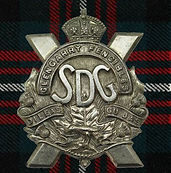Rhineland Battlefield Tours
Canadese aandeel in
Operation Plunder en Varsity




Na de succesvolle afronding van Operaties "VERITABLE " (waarvan "BLOCKBUSTER" deel uitmaakte) en "GRENADE " op 10 maart bracht de opperbevelhebber in een positie om de beslissende fase van de oorlog aan het Westelijk front in te gaan. De winteroffensieven van het Eerste Canadese Leger en het Negende Amerikaanse Leger hadden de Geallieerden nu de controle gegeven over de gehele westelijke oever van de Rijn vanaf de Nederlands-Duitse grens tot aan het bruggenhoofd dat door Generaal Bradley's 12 U.S. Legergroep bij Remagen ongeveer 12 mijl ten zuiden van Bonn op 7 maart 1945 werd gevormd. Het was dus mogelijk om op grote schaal operaties in Duitsland te overwegen.
Het noordelijke Amerikaanse leger zou de Rijn bij Rheinberg aanvallen om de rechterflank van het tweede Britse leger en de bruggen bij Wesel te beschermen. Lt-Gen Dempsey's (British Second Army) troepen zouden oversteken in de omgeving van Xanten en Rees, terwijl General Matthew Bunker Ridgway (XVIII U.S. Airborne Corps) zou "binnenvallen" ten noorden van Wesel.
Zo zouden de twee aanvallende legers een bruggenhoofd ten oosten van de Rijn veilig stellen binnen het gebied begrensd door de steden Duisberg, Bottrop, Dorsten, Borken, Aalten, Doetinchem en Pannerden
Aangezien de linkerflank van de komende operaties van legergroep 21 Army Group onder Canadese verantwoordelijkheid zou vallen, was generaal Crerar met luitenant-generaal Dempsey overeengekomen dat het 2 Cdn Corps zou onder de operationele controle van het Tweede Leger worden geplaatst kort voordat de eigenlijke aanval werd ingezet. De Canadese formatie zou dan te zijner tijd over de Rijn worden geleid en worden gebruikt om het bruggenhoofd van Rees naar het noordwesten in de richting van Doetinchem en Aalten uit te breiden en Emmerich veilig te stellen als communicatiecentrum en als brugplaats.
Wanneer de rivier op dat punt was overbrugd zou 2 Cdn Corps terugkeren naar Generaal Crerar’s bevel.
De voorwaarde voor de operaties van het Eerste Cdn Leger was dan ook de bouw van een brug bij Emmerich, maar dit was niet mogelijk zolang het hoge terrein ten noordwesten van Emmerich in handen van de vijand bleef: Dit beboste gebied, bekend als de Hoch Elten, rijst op tot een hoogte van ongeveer 240 voet en beslaat het ruwweg driehoekige gebied begrensd door Elten, Kilder, Zeddam en 's Heerenberg. De Hoch Elten was al lang een doel met hoge prioriteit vanwege zijn dominante positie en het was met de speciale taak om het in te nemen dat de Canadezen door de linkerzijde van het Tweede Leger over de 30 Corps bruggen moesten worden doorgegeven.
De operatie van 2 Cdn Corps zou bekend worden als "HAYMAKER".


Operatie "PLUNDER" was geboren en de Canadese deelname aan de aanval over de Rijn en de uitbreiding van het bruggenhoofd door 2 Cdn Corps 23/24 mrt - 1 apr 45 word daarmee in deze speciale tour besproken.
De 9de Canadese Infanterie Brigade als onderdeel van de 3rd Canadese Infantrie Divisie en onderbevel gesteld van het 30ste Britse Corps opende de aanval over de rivier de Rijn samen met de Britse 51ste (Highland) Infantry Division in de vroege mogen van 24 maart 1945.



De 1st Canadian Parachute Battalion R.C.I.C. was tijdens Operation Varsity een onderdeel van het 3rd Britse Parachute Brigade dat onderdeel uit maakte van de British 6th Airborne Division.
De 1st Canadian Parachute Battalion R.C.I.C. landen op 24 maart 1945 rond 10:00u op Drop Zone “A” (Alfa) en hun opdracht was het westelijke deel van het Dieserfordterwald te zuiveren van vijand en de link-up te verzorgen met eenheden van de 15de Scottisch Division.
In deze tour bezoeken we het landingsterrein van de 1st Canadian Parachute Battalion R.C.I.C. en bespreken we de acties van deze eenheid tot de linkup met de 15de Scottisch Divison.
We bespreken de overgang van de Rijn en de aanval van de 9 Canadese Divisie richting het plaatsje Bienen waarde Canadese divisie de 51ste (Highland)Division te hulp schoot die vast gelopen waren in hun aanval en geen kant meer op konden door heftig verzet van de Duitse Paratropers.
We vervolgen onze tour richting Emmerich en de aanloop naar de gevechten om en in Hoch-Elten.
We gaan kijken op de plek waar de Canadese genisten de bruggen over de Rijn hebben gebouwd om te eindigen met de Canadese aanval richting de Achterhoek
.png)